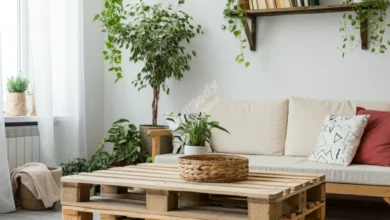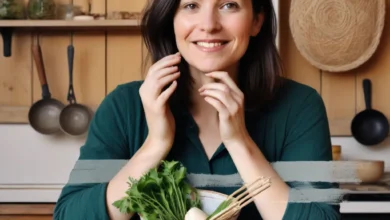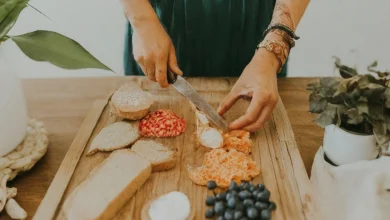Zero Waste Family Crafts: Creating a Handmade Haven
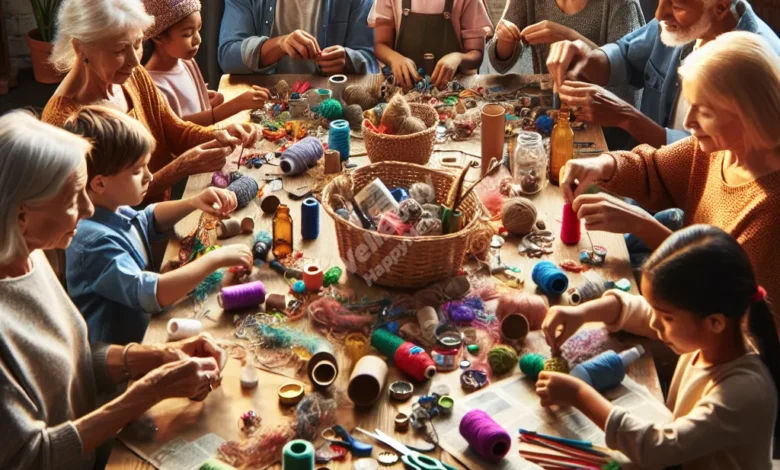
I. Introduction
Did you know that the average American produces about 4.9 pounds of waste per day? That’s a staggering amount of trash! But what if we could turn some of that potential waste into beautiful, useful creations while spending quality time with our loved ones? Welcome to the world of zero waste crafts for families!
Zero waste crafting is all about using materials we already have at home to create something new and exciting, without generating additional trash. It’s a fun, educational, and environmentally friendly way for the whole family to get creative together. By engaging in these sustainable DIY projects, we not only reduce our environmental impact but also teach our children valuable lessons about resourcefulness and conservation.
In this blog post, we’ll explore a variety of family-friendly upcycling activities that will transform your home into a handmade haven. From simple crafts for young children to more complex projects for teens and adults, we’ll cover it all. Get ready to dive into a world where imagination meets sustainability, and where every family member can contribute to creating a greener, more creative home environment.
II. Understanding Zero Waste Crafting
A. Definition of zero waste crafting
Zero waste crafting is the practice of creating art, decorations, or useful items using materials that would otherwise be discarded. It’s about reimagining waste as a resource and finding creative ways to repurpose items we already have.
B. Benefits of zero waste crafts
Here are some key benefits of engaging in zero waste crafts:
- Environmental Impact: Reduces waste sent to landfills
- Cost-Effective: Uses materials you already have, saving money
- Creativity Boost: Encourages thinking outside the box
- Family Bonding: Provides opportunities for shared activities
- Skill Development: Teaches problem-solving and resourcefulness
C. Common materials found at home for zero waste crafts
You might be surprised by how many craft supplies you already have around your house. Here’s a list of common items you can use:
- Cardboard boxes and tubes
- Old newspapers and magazines
- Empty glass jars and plastic bottles
- Fabric scraps and old clothing
- Bottle caps and corks
- Used gift wrap and ribbons
- Broken jewelry or buttons
- Empty tin cans
- Egg cartons
- Dried flowers or leaves
By looking at these everyday items with a creative eye, you can transform them into something new and exciting. Zero waste crafting is all about seeing potential in the things we might normally throw away.
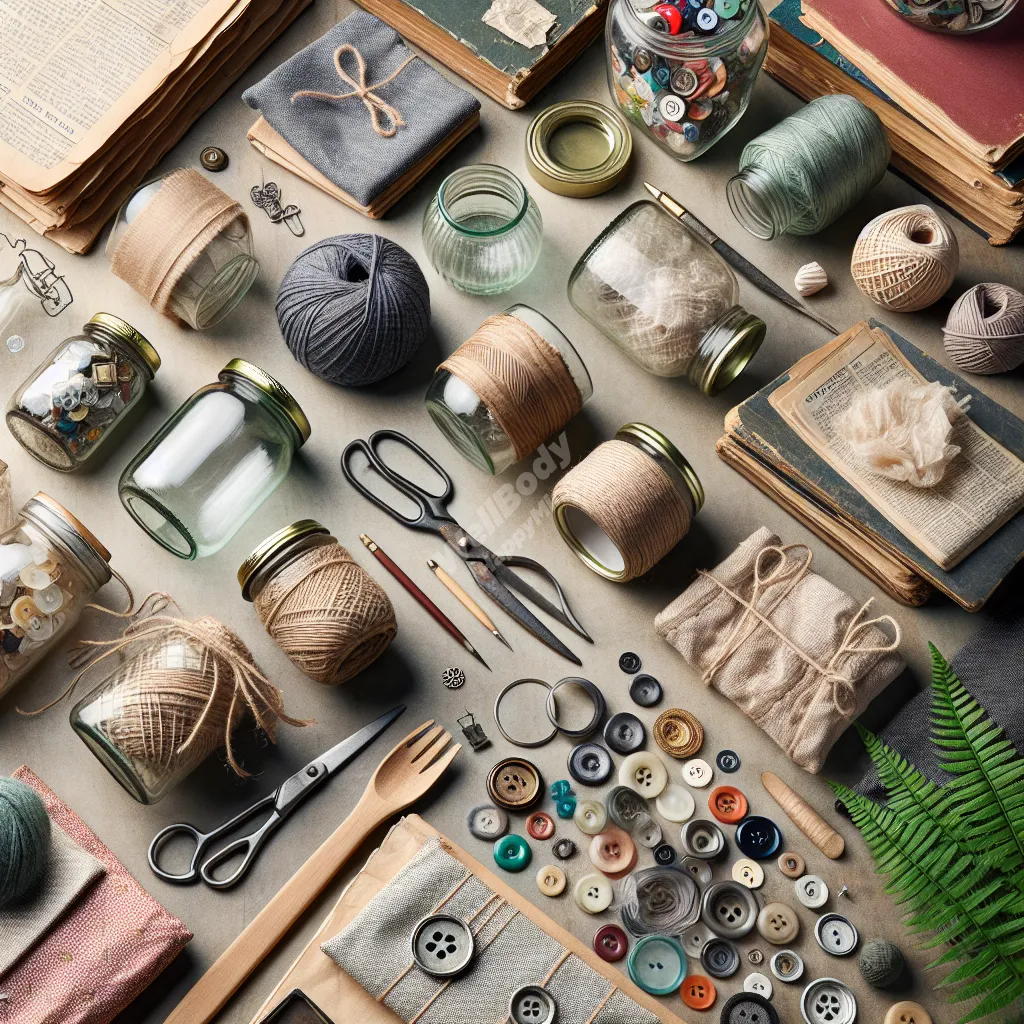
III. Age-Appropriate Zero Waste Crafts
A. For young children (ages 3-7)
- Toilet paper roll animals
Transform empty toilet paper rolls into adorable animal figures. Children can paint the rolls, add googly eyes, and create ears or tails from scrap paper. This simple upcycling project encourages creativity and fine motor skills development. - Painted rock art
Materials: Smooth rocks, acrylic paints, paintbrushes
Basic steps:
- Collect smooth rocks from your garden or local park
- Clean and dry the rocks
- Paint fun designs, animals, or patterns on the rocks
- Use as paperweights or garden decorations
- Recycled paper beads
Simple instructions:
- Cut colorful magazine pages into long triangles
- Tightly roll each triangle around a toothpick, starting from the wide end
- Glue the end to secure the bead
- String the beads to make bracelets or necklaces
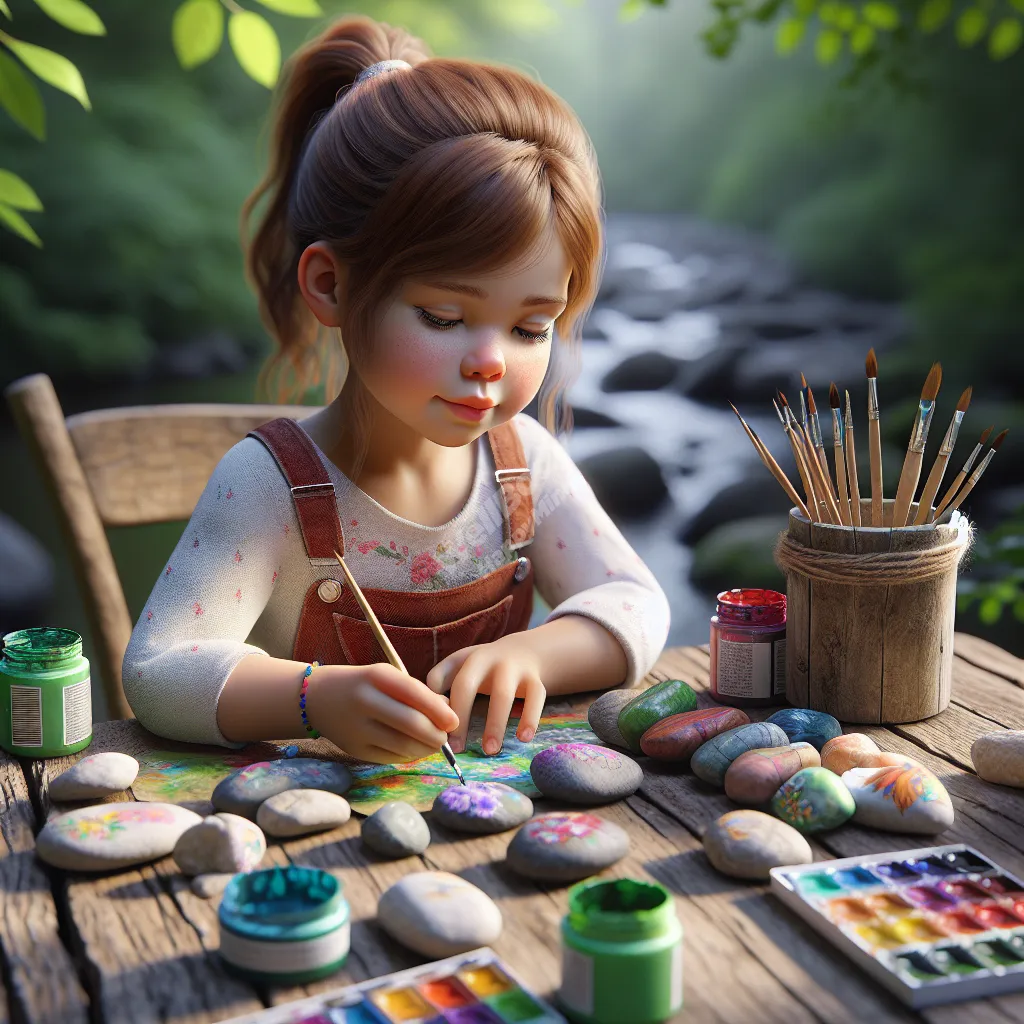
B. For older children (ages 8-12)
- Tin can planters
Materials: Clean tin cans, paint, small rocks, soil, seeds or small plants
Steps:
- Remove labels and wash cans thoroughly
- Paint the outside of the cans in fun colors or patterns
- Add small rocks at the bottom for drainage
- Fill with soil and plant seeds or small plants
- T-shirt tote bags
Brief how-to:
- Cut off the sleeves of an old t-shirt
- Cut a wider neck opening
- Turn the shirt inside out and sew the bottom closed
- Turn right side out and decorate as desired
- Cardboard box dollhouses
Key points for creation:
- Use a large cardboard box as the main structure
- Cut out windows and doors
- Create furniture from smaller boxes or cardboard scraps
- Decorate with paint, fabric scraps, or old wallpaper
C. For teens and adults
- Upcycled book art
Ideas and basic techniques:
- Folded page art: Fold pages to create 3D designs
- Book page wreaths: Roll and glue pages to form a circular wreath
- Book page flowers: Cut and shape pages into delicate floral arrangements
- Mason jar solar lights
Materials: Mason jars, solar-powered fairy lights, wire
Instructions:
- Clean and dry mason jars
- Insert solar-powered fairy lights
- Use wire to hang the jars or place them on outdoor surfaces
- Let them charge during the day for a magical nighttime glow
- Fabric scrap quilting
Brief overview of process:
- Collect fabric scraps of various colors and patterns
- Cut scraps into uniform shapes (squares, triangles, etc.)
- Arrange pieces in a pleasing pattern
- Sew pieces together to form the quilt top
- Add batting and backing, then quilt as desired
These age-appropriate zero waste crafts offer fun and engaging ways for family members of all ages to participate in sustainable DIY projects. They not only reduce waste but also foster creativity and provide a sense of accomplishment.
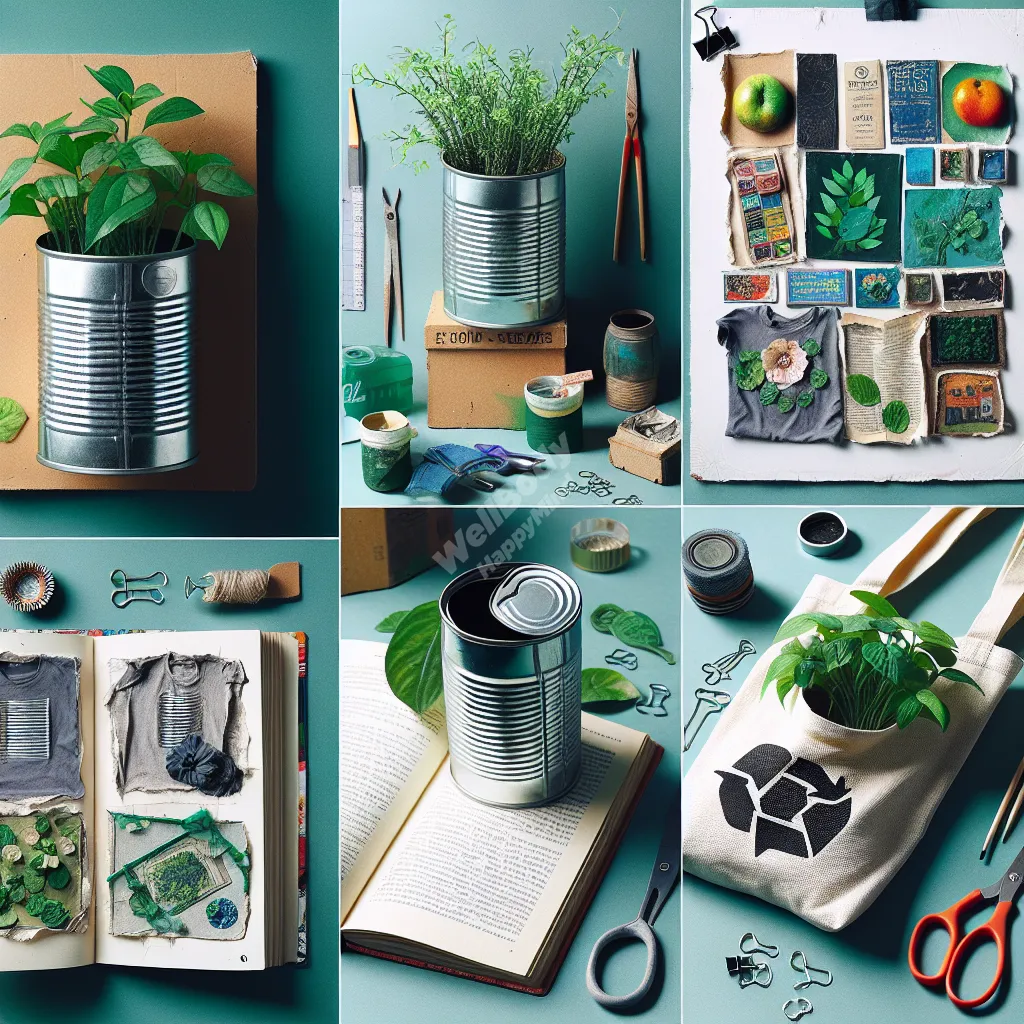
IV. Family-Friendly Zero Waste Activities
A. Nature scavenger hunt and craft
Organize a fun outdoor activity that combines exploration with creativity:
Items to find:
- Interesting leaves
- Smooth pebbles
- Pinecones
- Acorns
- Twigs of different sizes
- Colorful flowers (if permitted)
Craft ideas using found items:
- Nature collage: Arrange items on recycled cardboard and glue in place
- Twig picture frames: Use twigs to create a rustic frame for family photos
- Leaf printing: Press leaves onto paper with paint to create beautiful patterns
B. Recycled material sculpture contest
Host a friendly family competition to create the most innovative sculpture:
Rules:
- Use only recyclable materials found in your home
- Set a time limit (e.g., 1 hour)
- Each family member creates their own sculpture
Judging criteria:
- Creativity
- Use of materials
- Structural integrity
- Overall aesthetic appeal
C. Zero waste garden projects
- Egg carton seed starters
- Cut apart egg cartons into individual cups
- Fill with potting soil
- Plant seeds and water gently
- Place in a sunny spot and watch them grow
- Plastic bottle vertical gardens
- Cut large windows in plastic bottles
- Fill with soil and plants
- Hang vertically using sturdy string or wire
- Perfect for small spaces or balconies
- Composting basics for families
- Choose a spot in your yard for the compost bin
- Layer green materials (fruit/vegetable scraps, grass clippings) with brown materials (dry leaves, shredded paper)
- Keep the pile moist but not wet
- Turn the compost regularly to aerate
- Use finished compost to enrich your garden soil
These family-friendly upcycling activities not only provide fun bonding experiences but also teach valuable lessons about sustainability and resourcefulness. By engaging in these projects together, families can develop a shared commitment to reducing waste and caring for the environment.
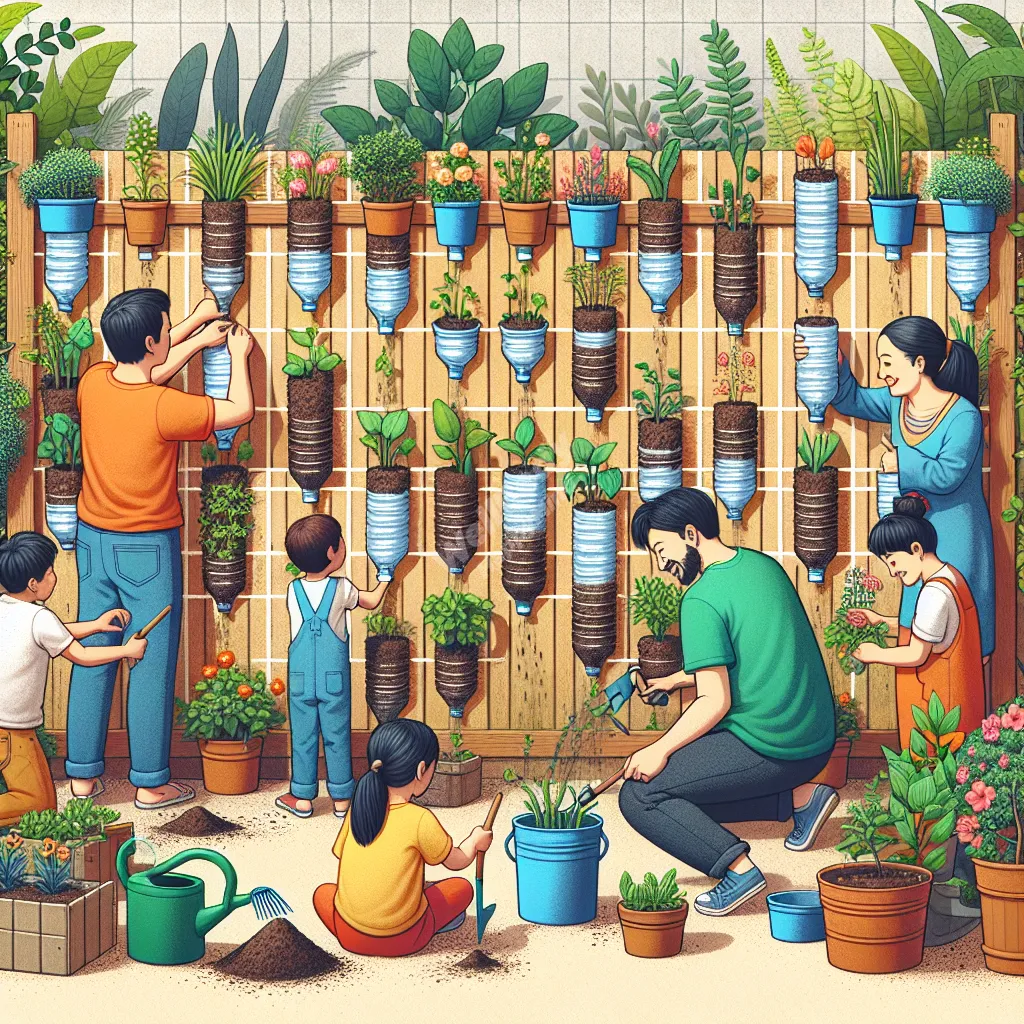
V. Educational Aspects of Zero Waste Crafting
A. Teaching sustainability through hands-on activities
Zero waste crafting offers an excellent opportunity to teach children about sustainability in a fun, engaging way. By transforming “trash” into treasures, kids learn firsthand that:
- Resources are valuable and can be reused creatively
- Small actions can have a positive environmental impact
- Reducing waste is possible and rewarding
These hands-on experiences make abstract concepts like resource conservation and environmental protection more tangible and memorable for children.
B. Developing creativity and problem-solving skills
Engaging in zero waste crafts challenges family members to:
- Think creatively about everyday objects
- Find innovative solutions with limited materials
- Adapt and improvise when faced with challenges
These skills are not only crucial for crafting but also valuable in many aspects of life, fostering a growth mindset and resilience.
C. Learning about recycling and upcycling
Simple explanation for kids:
Recycling is like giving trash a new life. Instead of throwing things away, we send them to special places where they’re turned into new things. For example, old paper can become new paper!
Upcycling is even cooler. It’s when we use our imagination to turn old stuff into something new and better ourselves. Like when we make a cool pencil holder from an old tin can!
By participating in zero waste crafts, children learn:
- Which materials can be recycled
- How to sort recyclables properly
- The importance of reducing waste before recycling
- How creativity can give new purpose to old items
These sustainable DIY projects provide practical, hands-on lessons about the 3 Rs: Reduce, Reuse, Recycle, helping children develop eco-friendly habits that can last a lifetime.
Through zero waste crafting, families can create a fun, educational environment where sustainability becomes a natural part of everyday life. These activities not only produce beautiful or useful items but also foster a deeper understanding of our impact on the environment.

VI. Organizing a Zero Waste Craft Day
A. Planning tips
- Set a date and inform all family members in advance
- Choose a theme (e.g., holiday decorations, useful household items)
- Gather materials from around the house in the days leading up
- Prepare workspaces with easy-to-clean surfaces
- Plan snacks that produce minimal waste
B. Setting up craft stations
Create designated areas for different activities to keep things organized:
- Material Station: Sort collected items by type (paper, fabric, plastic, etc.)
- Cutting Station: Set up with scissors, craft knives (for adults), and cutting mats
- Painting Area: Provide water-based paints, brushes, and water cups
- Gluing Zone: Offer various adhesives suitable for different materials
- Drying Space: Designate a safe area for finished crafts to dry
C. Encouraging participation from all family members
- Assign roles based on skills and interests (e.g., material prep, design, assembly)
- Create a collaborative project that everyone can contribute to
- Host a show-and-tell at the end of the day for everyone to share their creations
- Offer choices of different crafts to suit various age groups and preferences
- Make it a regular event, perhaps monthly, to build anticipation and habit
Organizing a zero waste craft day can become a cherished family tradition. It’s an opportunity to spend quality time together, unleash creativity, and reinforce the importance of sustainability. By involving everyone in the planning and execution, you create a sense of shared responsibility and accomplishment.
Remember, the goal is not perfection but rather enjoying the process of creating together while being mindful of our environmental impact. Embrace the imperfections and celebrate the unique creations that emerge from your family’s handmade haven.
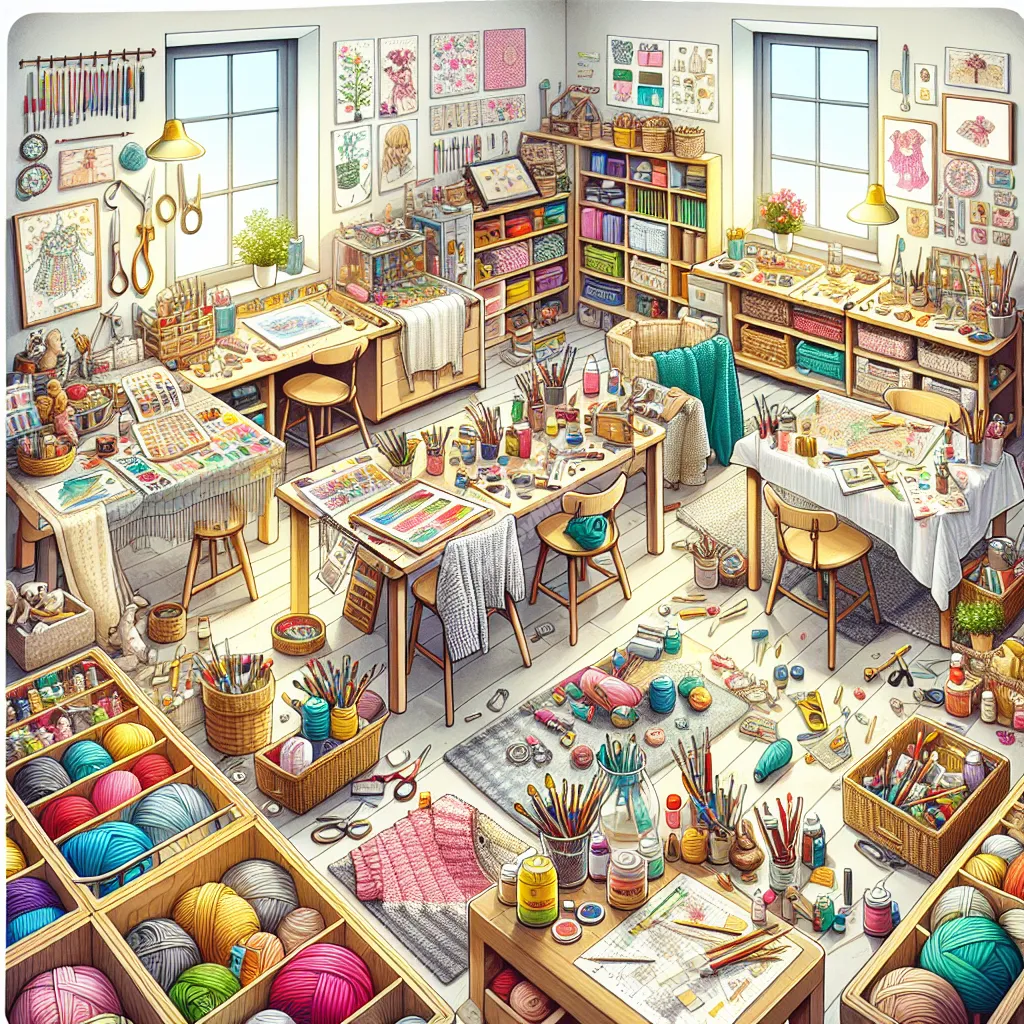
VII. Displaying and Using Zero Waste Creations
A. Creating a family gallery wall
Transform a blank wall in your home into a vibrant showcase of your family’s creativity:
- Designate a space in a common area like the living room or hallway
- Use recycled frames or create frames from cardboard or old picture frames
- Rotate displays regularly to feature new creations
- Add labels or descriptions to tell the story behind each piece
- Consider a theme for your gallery, such as seasonal crafts or family portraits
B. Gifting handmade items to friends and relatives
Zero waste crafts make thoughtful, personalized gifts:
- Create gift sets of homemade items (e.g., painted rocks, upcycled jewelry)
- Design custom wrapping paper using brown paper bags and stamps made from potato cuts
- Make zero waste gift tags from old greeting cards or magazine cutouts
- Explain the story and significance behind the handmade gift to the recipient
C. Incorporating crafts into daily life
Make your creations functional as well as beautiful:
- Use tin can planters to start an indoor herb garden
- Hang mason jar solar lights in your backyard for eco-friendly lighting
- Employ T-shirt tote bags for grocery shopping to reduce plastic bag use
- Display children’s art on refrigerators or bulletin boards made from cork or fabric scraps
By integrating your zero waste creations into your daily life, you not only reduce clutter but also constantly remind your family of their creative achievements and commitment to sustainability.
These displays and uses of your family-friendly upcycling activities serve as ongoing inspiration, encouraging continued creativity and mindfulness about waste reduction. They transform your living space into a true handmade haven, filled with unique, meaningful items that reflect your family’s values and artistic expression.
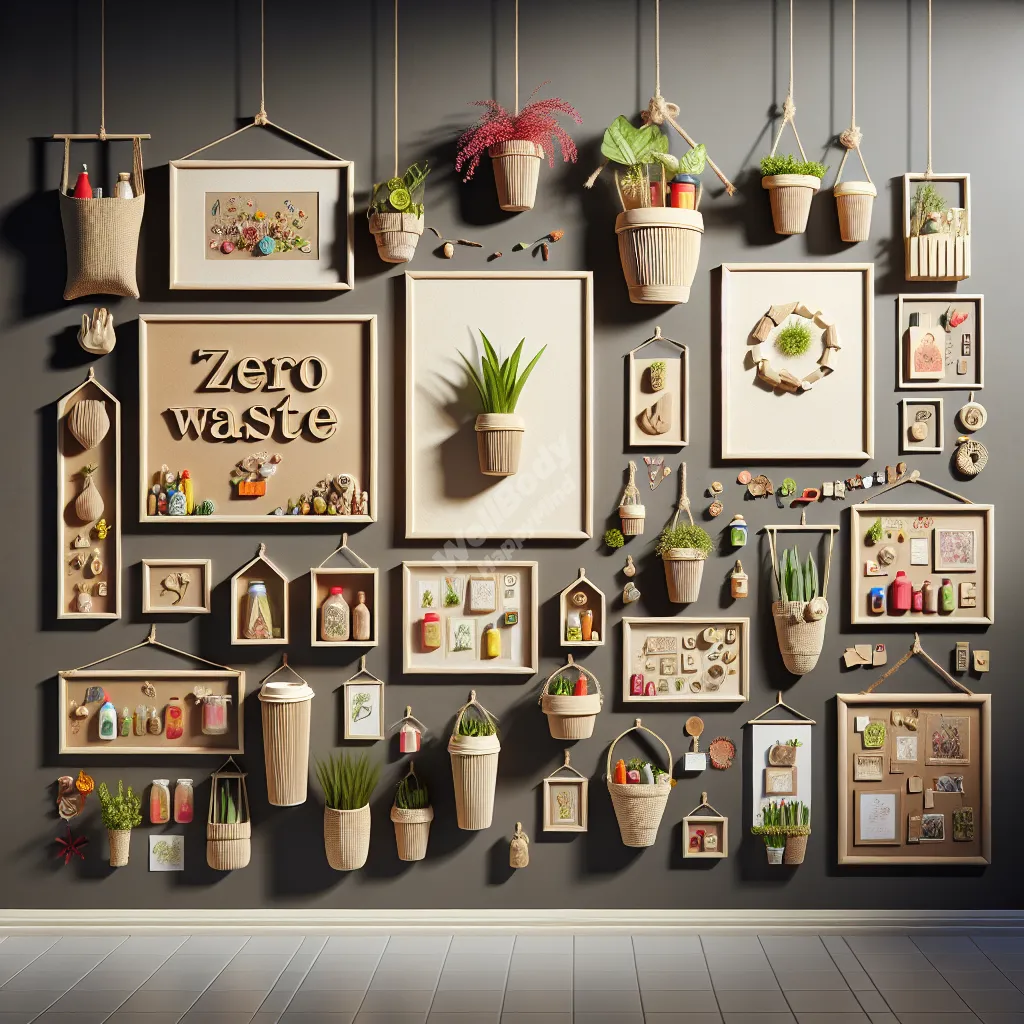
VIII. Challenges and Solutions in Zero Waste Crafting
A. Dealing with non-recyclable materials
Tips for minimizing waste:
- Repurpose items like bubble wrap for texture in art projects
- Upcycle plastic packaging into organizers or planters
- Donate usable items you can’t recycle to schools or community centers
- Research local specialty recycling programs for unusual materials
- Avoid purchasing products with excessive non-recyclable packaging
B. Storage solutions for craft supplies
Practical ideas:
- Use clear glass jars to store and display small items like buttons or beads
- Repurpose shoe boxes for organizing paper scraps by color
- Create a pegboard system from recycled wood for hanging tools
- Employ old dresser drawers as stackable storage units
- Utilize vertical space with hanging organizers made from fabric scraps
C. Balancing creativity with functionality
Brief discussion:
While zero waste crafting encourages creativity, it’s important to create items that serve a purpose to avoid cluttering your space with unused crafts.
- Brainstorm practical uses for your creations before starting a project
- Combine aesthetics with function, like decorative storage containers
- Rotate seasonal items to keep your space fresh without accumulating too much
- Repurpose or recycle old crafts if they no longer serve you
- Gift or donate excess creations to avoid unnecessary accumulation
Remember, the goal of zero waste crafting is not just to create, but to reduce overall waste. By focusing on functional items and finding creative storage solutions, you can maintain a balance between your artistic expression and a clutter-free, sustainable home environment.
These challenges are common in sustainable DIY projects, but with a bit of planning and creativity, they can be overcome. The solutions often lead to even more innovative ideas and a deeper commitment to the zero waste lifestyle.
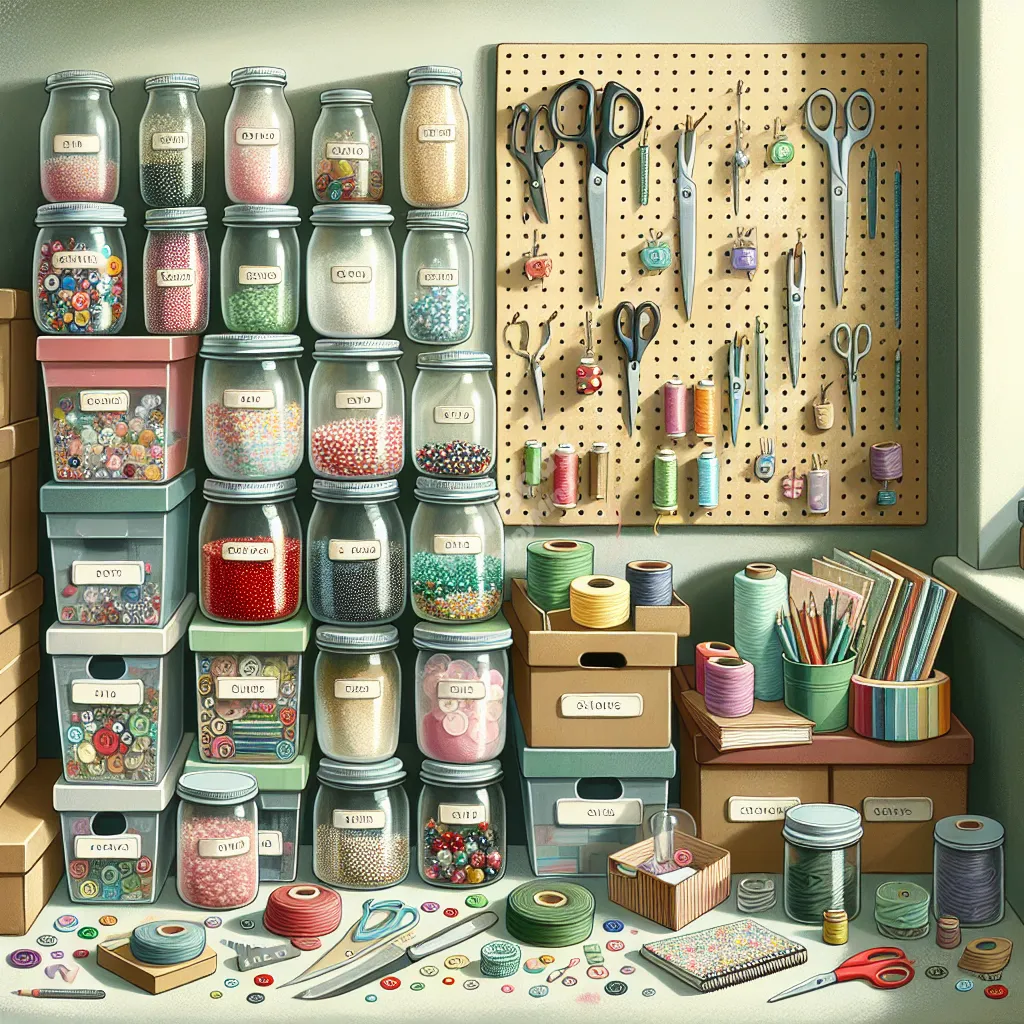
IX. The Impact of Zero Waste Crafting on Family Bonding
A. Shared experiences and memories
Zero waste crafting provides a unique opportunity for families to create lasting memories:
- Collaborative projects foster teamwork and communication
- Overcoming challenges together strengthens family bonds
- Celebrating achievements boosts collective self-esteem
- Creating traditions around crafting days builds anticipation and unity
- Sharing stories behind upcycled items keeps family history alive
B. Developing a family culture of sustainability
Through family-friendly upcycling activities, you can:
- Lead by example, showing children the importance of resourcefulness
- Encourage dialogue about environmental issues in an age-appropriate manner
- Make sustainability fun rather than a chore or obligation
- Empower children to make eco-friendly choices in their daily lives
- Create a shared sense of purpose in protecting the environment
C. Encouraging ongoing environmental awareness
Zero waste crafting can be a gateway to broader environmental consciousness:
- Spark curiosity about where things come from and where they go
- Inspire research into local recycling programs and environmental initiatives
- Encourage participation in community clean-up events
- Foster innovation in finding new ways to reduce household waste
- Develop critical thinking about consumerism and its environmental impact
By engaging in sustainable DIY projects as a family, you’re not just creating art or useful items – you’re building a stronger, more connected family unit with a shared commitment to the environment. These activities provide a platform for open communication, shared learning, and mutual support.
The skills and values developed through zero waste crafting often extend beyond the craft table, influencing how family members approach challenges, make decisions, and interact with the world around them. In essence, you’re creating a handmade haven not just in your physical space, but in your family’s heart and mind.
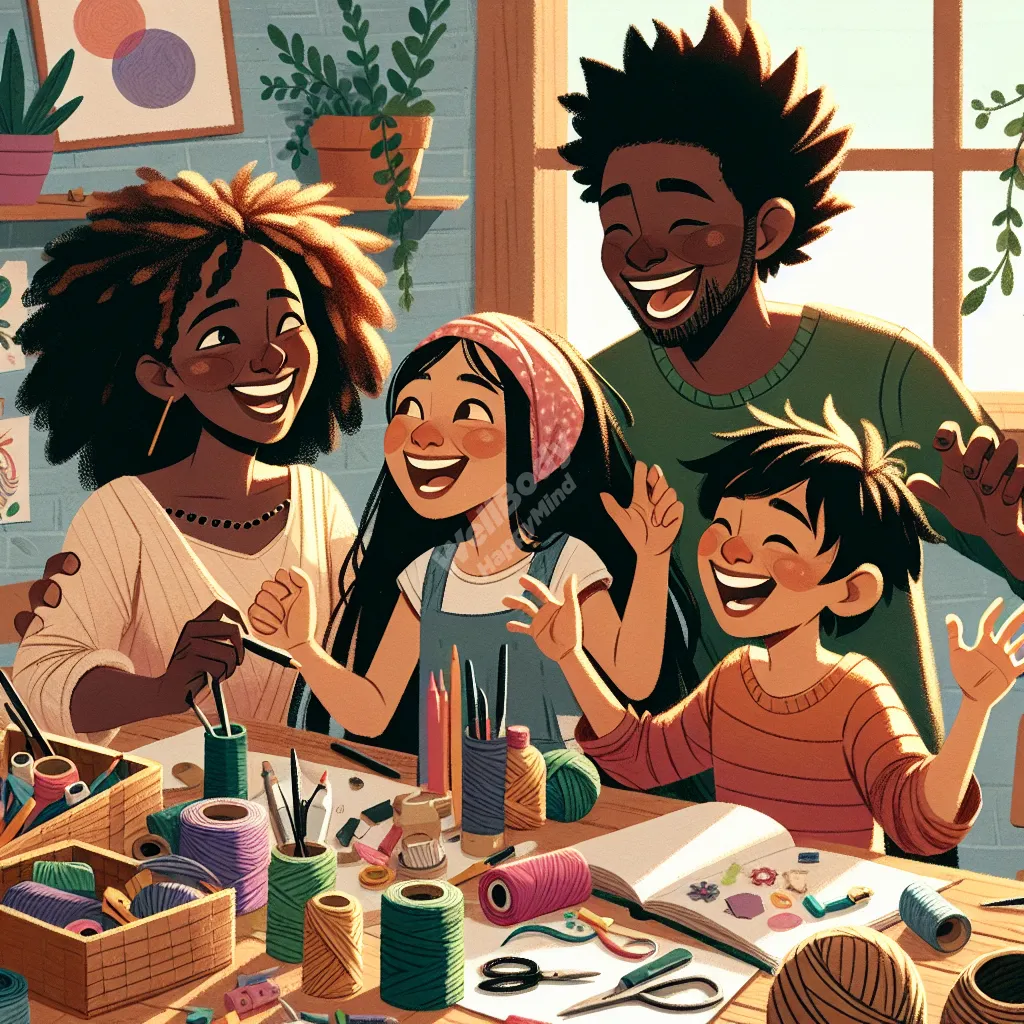
X. Conclusion
A. Recap the benefits of zero waste crafts for families
Zero waste crafting offers a wealth of benefits for families:
- Environmental impact: By repurposing materials, we reduce waste and conserve resources.
- Financial savings: Using items already at home cuts down on craft supply expenses.
- Creativity boost: These projects encourage innovative thinking and problem-solving.
- Family bonding: Shared activities strengthen relationships and create lasting memories.
- Skill development: Crafting nurtures various skills, from fine motor abilities to design thinking.
B. Encourage readers to start their zero waste crafting journey
Starting your family’s zero waste crafting adventure is easier than you might think:
- Start small: Begin with simple projects using readily available materials.
- Involve everyone: Let each family member contribute ideas and skills.
- Be patient: Remember, it’s about the process, not perfection.
- Stay consistent: Make zero waste crafting a regular family activity.
- Share your creations: Inspire others by showcasing your family’s projects.
C. Final thoughts on creating a handmade haven at home
Transforming your home into a handmade haven through zero waste crafts is more than just a fun activity – it’s a lifestyle change that can positively impact your family and the planet. By embracing sustainable DIY projects, you’re not only reducing waste but also nurturing creativity, teaching valuable life skills, and creating a home filled with meaningful, personalized items.
Remember, every small action counts. Whether it’s turning an old t-shirt into a reusable bag or crafting decorations from recycled materials, you’re making a difference. You’re showing your children that with creativity and care, we can turn everyday objects into treasures while protecting our environment.
So gather your family, look around your home with fresh eyes, and embark on this exciting journey of zero waste crafting. You’ll be amazed at the beautiful things you can create together, the memories you’ll make, and the positive impact you’ll have on the world around you.
Your handmade haven awaits – let the crafting begin!

